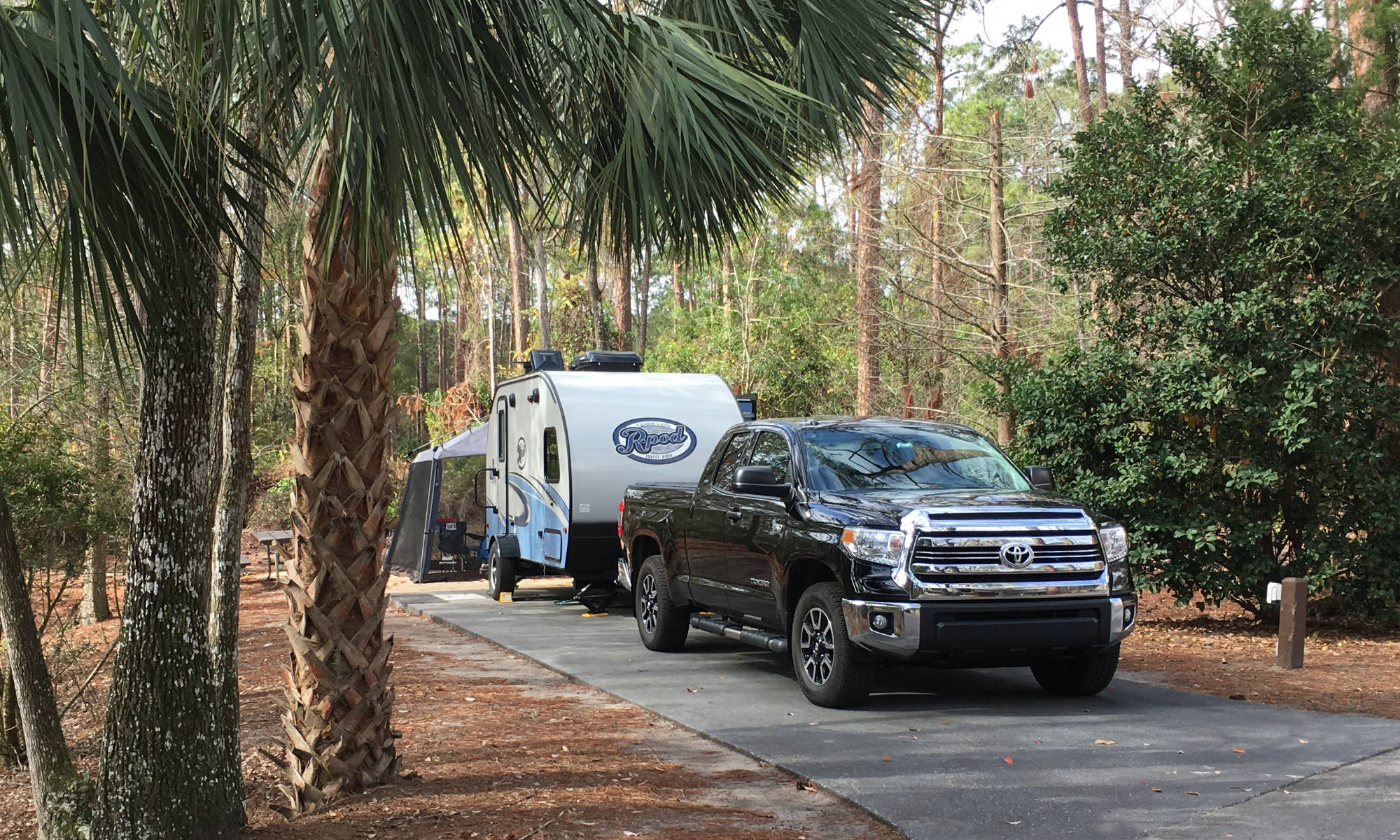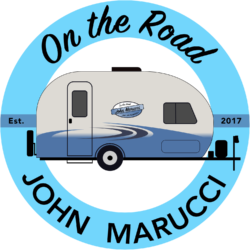This blog will cover how much it really costs to own an RV. Hopefully, you are up for a bit of deeper analysis, as the purpose here is to help those considering an RV to understand the real costs associated with this lifestyle and to motivate RV owners to use what they own. As you’ll see, RV ownership isn’t for everyone.
Some of you may know that I have a professional background in data and financial analytics, so this type of cost analysis is right up my alley. The timing of doing this is also good, as I’ve recently published a video on my five-year ownership experience with my 2020 Keystone Bullet 243BHS. We will use the past five years of my RV ownership to analyze the expenses involved with owning an RV.

This is a good proxy, as the Keystone Bullet is your average travel trailer in size. Whether this trailer has had more or less improvement and maintenance than the average five-year-old trailer is not easy to determine, so we’ll start with the assumption that the maintenance costs and carrying costs are about average.
With this said, let’s get into a basic equation we will use to determine the cost of ownership.
The equation is Purchase costs (which includes initial price, fees, and taxes), plus maintenance costs, plus carrying costs, plus improvements, plus incremental travel expenses, minus residual (resale value).
Purchase Cost + Maintenance Cost + Carrying Cost + Improvements + Incremental Travel Cost – Residual Value = Total Cost of Ownership.
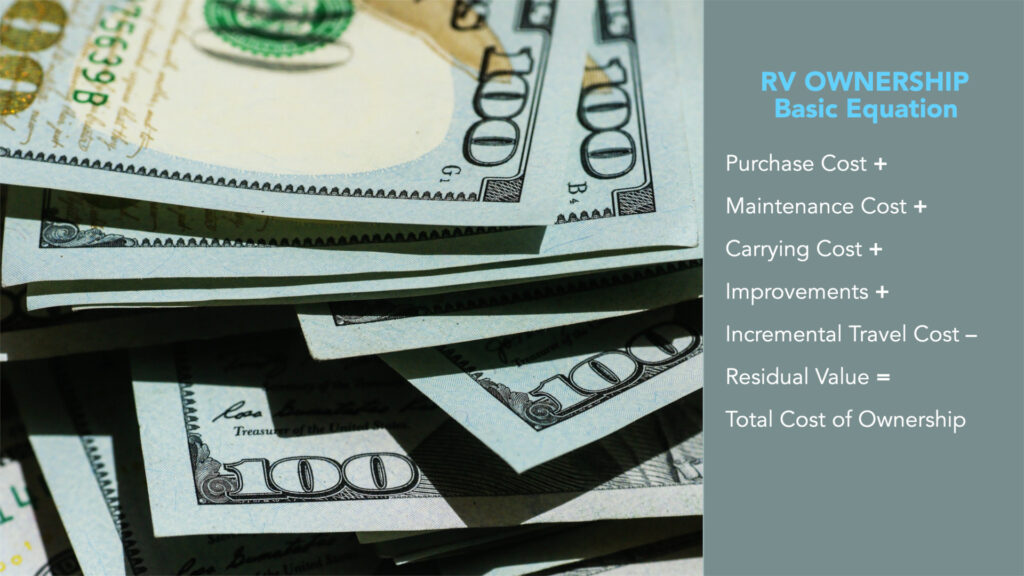
A few assumptions need clarification: I will not discount cash flows or adjust for inflation for expenses or residuals. Also, the opportunity cost of my time making repairs and doing DIY maintenance is not included. Also, I did not finance my RV. If we added financing costs over the five years, interest amounts would need to be added. Finally, determining the resale amount (residual) at the five-year point is a best guess based on limited market data.
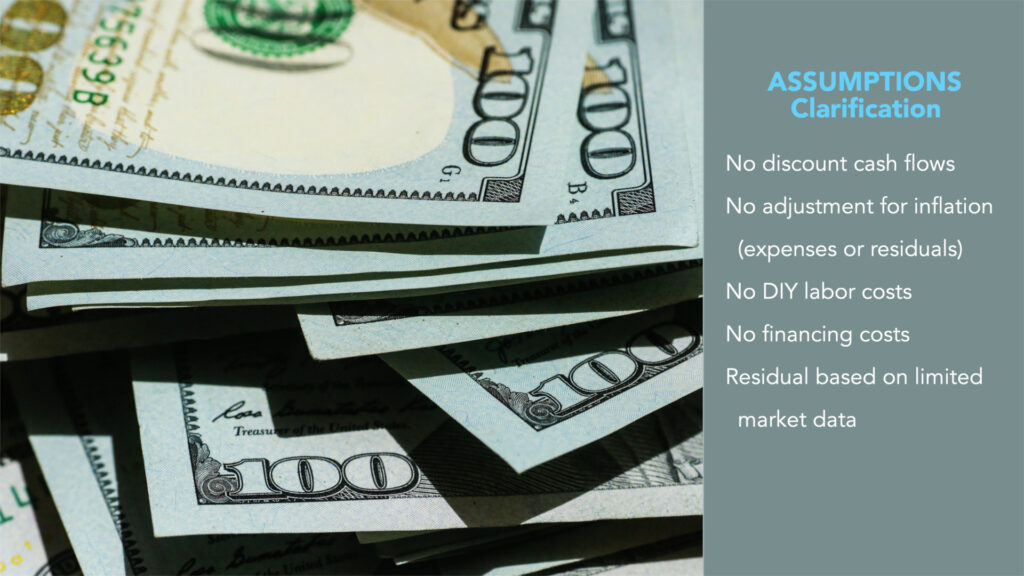
With these assumptions out of the way, let’s look at a simple example:
Let’s say you paid $30k for a new trailer five years ago, including all fees and taxes, accumulated $3k in maintenance costs (outside of warranty expenses), and paid $200 per month in carrying costs (insurance & storage), and invested another $2k in improvements to your RV. After researching, you think your RV is now (at Year 5) worth $18k. The total cost of ownership would be $29k, or $5.8k per year, or $483 per month, or $290 per night at 20 nights average per year.[1]
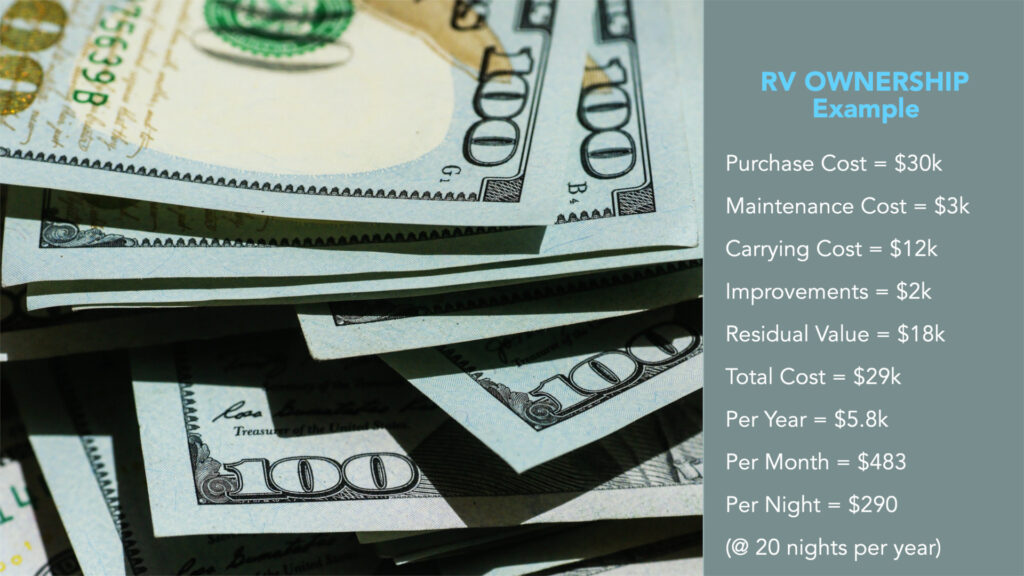
Most of us intuitively feel better when we use what we’ve purchased, and here is why: In economics, the concept of enjoyment or usage is known as utility. As you use and enjoy what you’ve purchased, you are exacting more utility from the rental cost of the item. For the above example, if you use your RV 40 nights per year vs. the 20-night national average, your per-night rental cost goes from $290 per night to $145. You are exacting more utility from the same rental cost.
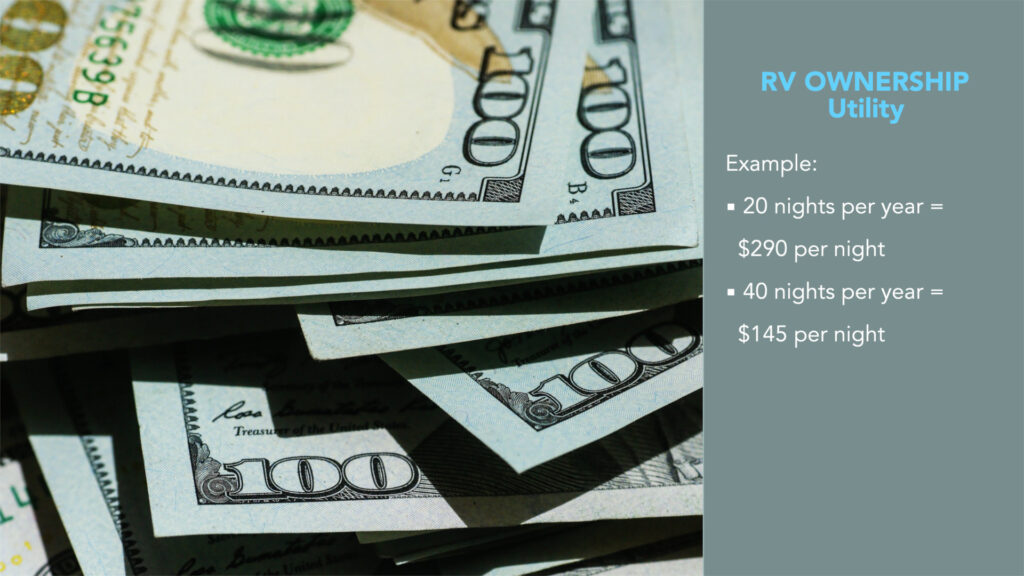
This is also why RVs are not selling nearly as well as a few years ago – the inputs to this basic financial equation have increased rental costs. If purchase, maintenance, and carrying costs have increased, and depreciation expenses have also increased, thus lowering residuals, most people start to see that the utility vs. rental cost (value proposition) worsens, and sales dry up.
My RV
Now that we’ve set the stage with a simple example let’s look at my real-life input. This would differ if this were my first RV, and I had to invest in items to get started, like sewer hoses, chocks, surge protectors, etc. These entry costs are not included.
My 2020 Keystone Bullet 243BHS, which I purchased in May of 2019, cost $23,557 with discounts, fees, and taxes.
Purchase Cost = $23,557
I combed through five years of transaction data, and maintenance costs for the trailer totaled $3,407. This included routine maintenance like packing wheel bearings by my local dealer and many other items like replacing faulty components and worn-out parts. It also included a recent set of new tires.
Maintenance Cost = $3,407
I also tabulated carrying costs, including storage expenses and RV insurance. Since I stored my trailer at a public storage facility, this cost was substantial over five years at $3,974. Insurance for the trailer over the same period was $1,916, which was lower than expected. The fact that this was not an expensive trailer meant cost savings regarding insurance. Total carrying costs for the five years amounted to $5,890.
Carrying Cost = $5,890
Next, we need to add improvement costs to the trailer. I added things like a backup camera, a WIFI, a better TV and sound bar, better foam in the dinette, a better shower head, a new mattress, a better bathroom fan, and other smaller items. These totaled $2,560 over the five years.
Improvements = $2,560
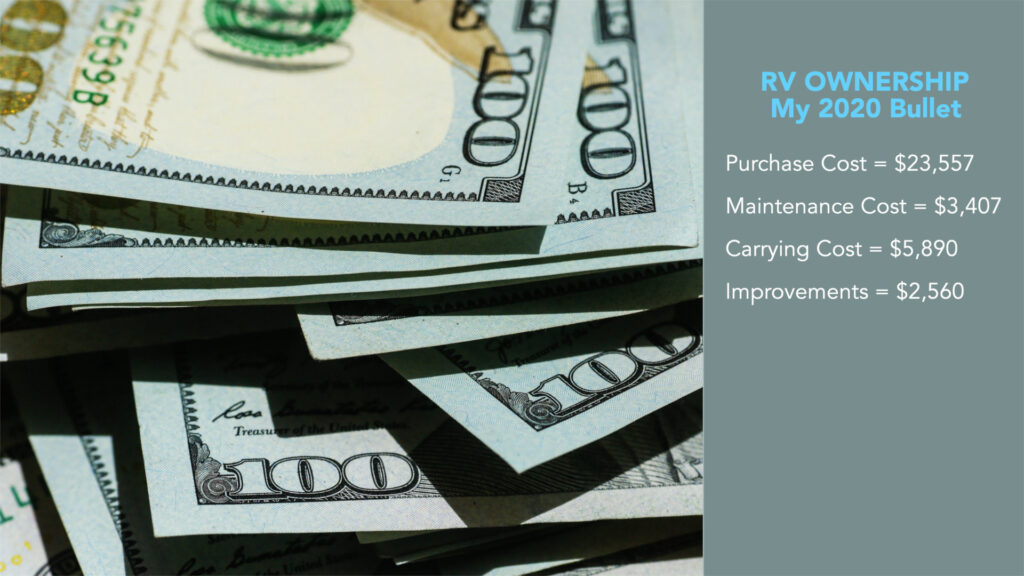
We need to talk for a moment about incremental travel costs. The idea is that we should capture the difference in fuel expense from towing vs. not towing. I am including this even though I likely would not have made the same trips without a trailer. My 2017 Toyota Tundra gets about 17 mpg on the highway not towing and averages about 9.6 mpg while towing. For this calculation, we need to hold the gas price steady at the five-year average of $3.39 per gallon.[2] Ideally, I’d record actual fill-up for data, but it is too time-consuming.
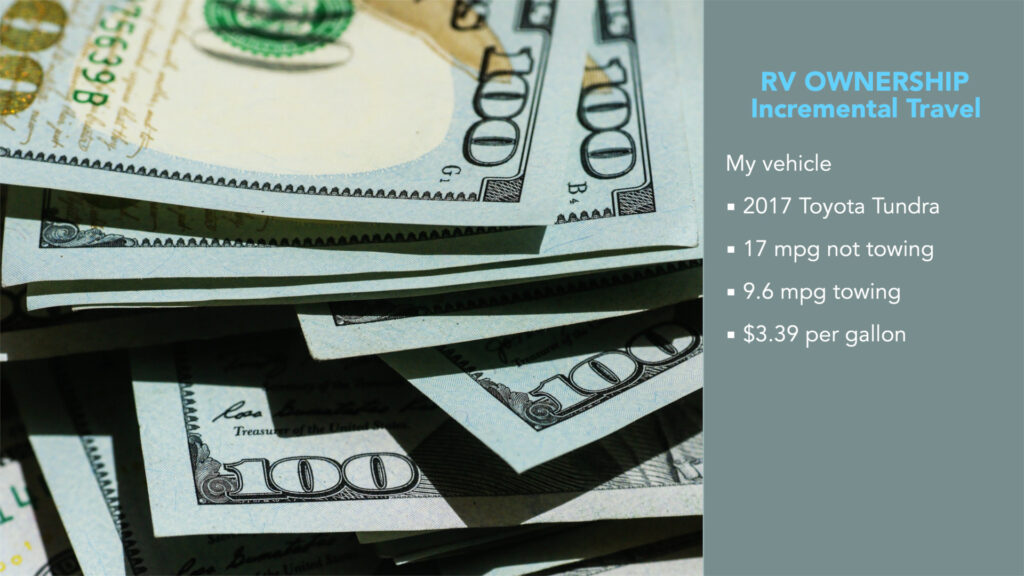
I did happen to record all my mileage for every trip taken in the trailer over five years. So here it goes: I totaled 17,855 miles towing the Keystone Bullet in 5 years. The differential fuel cost would be (17,855 miles / 9.6 mpg * $3.39 price per gallon) – (17,855 / 17 mpg * $3.39) or $6,305.05 (towing) – $3560.49 (not towing) or $2,744.56 in incremental fuel expense.
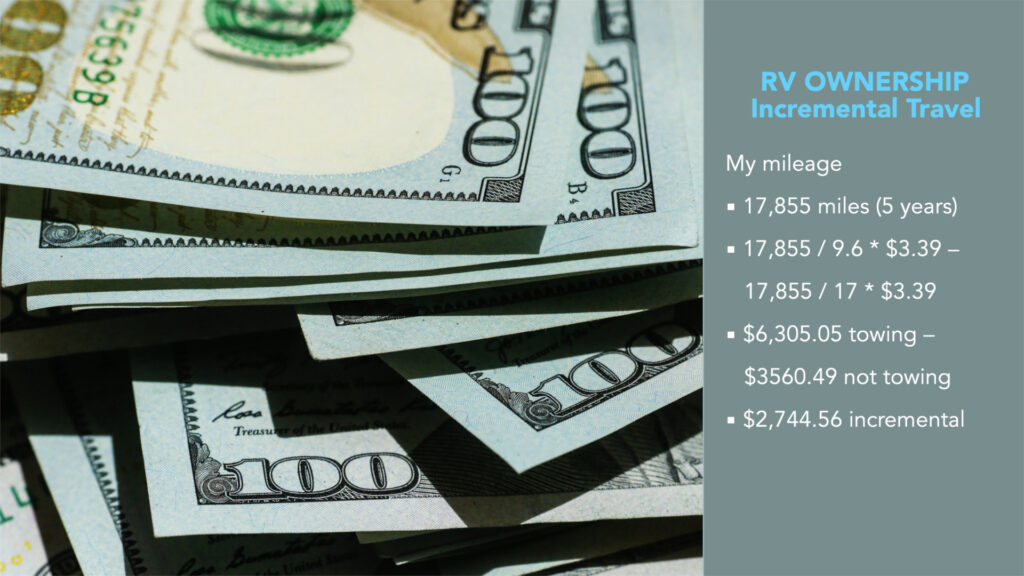
Incremental Travel Cost = $2744.56
It could be argued that the entire $6,305 should be added since trips wouldn’t have happened otherwise, but we’ll proceed as stated. If we insert this incremental travel cost into our total cost of ownership equation, we end up with $38,159 in total costs before residual.
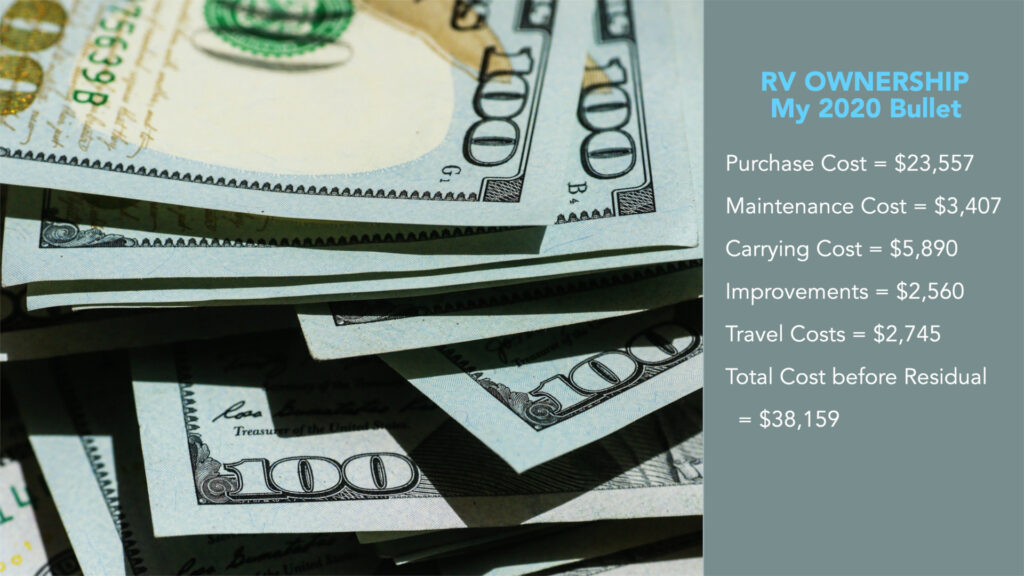
Residual or hypothetical resale value isn’t the easiest to figure out. For one thing, a simple JD Powers used RV value lookup doesn’t consider the amount spent on improvements.
How would I go about pricing my five-year-old trailer? The best answer is to look at like units for sale on RVTrader.com. The problem is that there aren’t many, and none at all, with my improvements. So, you have to price looking at similar units for sale and adding an amount for what you’ve invested in improvements.
As of August 18th, 2024, there were 489 used Keystone Bullet travel trailers for sale on RVTrader.com, and only 193 from model years 2019 to 2021. If we choose only model year 2020, there are only 48 units, including all trim levels. How many 243BHS units are for sale? Just two, and both are being sold by dealers. One is just under $23k, and one is just below $30k. The cheaper one is a later 2020 model with improvements. My gut is that the later-year unit is priced a bit high at $23k, and the second unit at $30k is unrealistically high.

With inflation, since I purchased my unit and the current selling price of these similar units, my base price would be about $20,000. This is right at the Low Retail value on JD Powers.[3] If I add in the many improvements, stellar, provable maintenance records, and outstanding condition of the trailer, I’d likely add $2,500 to the price and go out at about $22,500. So, when we subtract the estimated residual, our total cost of ownership equals $15,659, or $3,132 per year or $261 per month.

This is where things get interesting. If I used the trailer as most people do, for 20 nights per year, my rental cost would be $15,659 / 100 nights, or $157 per night. However, I used my trailer extensively in five years, with 665 nights of use, so the calculation is $15,659 / 665, or just $23.55 per night. My use case is extreme, but it proves that the rental costs become minimal if you plan to use a trailer extensively.
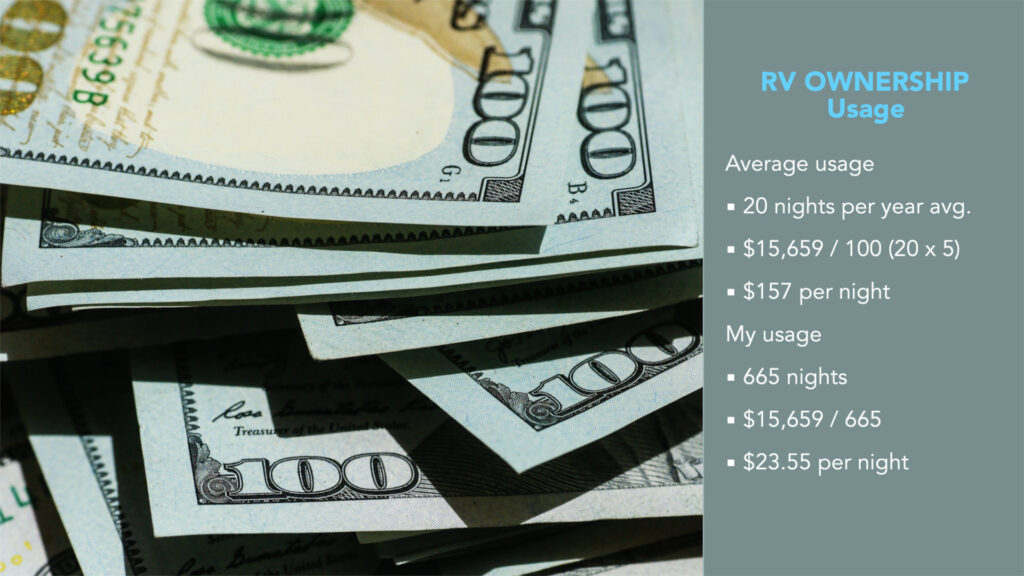
Another big caveat is that this is only your rental cost for having and using the RV and doesn’t include site rentals. RVing can be much less expensive than staying in hotels if you use your RV extensively. If I can pay, on average, with taxes, $125 per night on a hotel, and my RV rental cost is only $23.55 per night, then I can pay as much as $101 per night for a campsite and break even. This is why when someone comments that they are giving up RVing and are going back to staying in hotels, my first question is, how much are you using your RV? There is real value in having a mobile apartment with you.
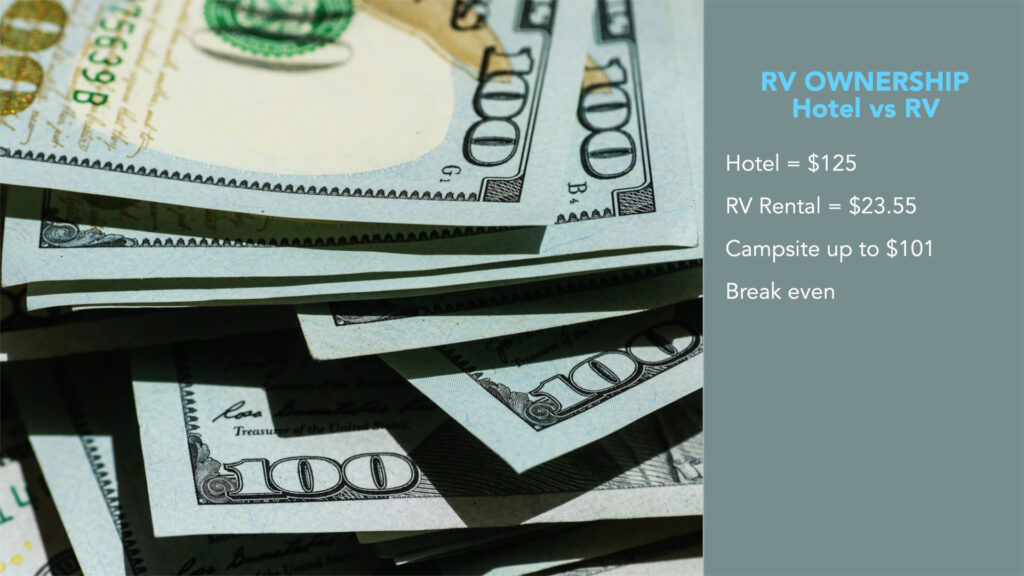
At the beginning of the blog, I mentioned that the entire purpose of this deep-dive analysis was to help those considering RVing understand the total cost and to help motivate those of us who own RVs to use them. My sober advice is that if you own an RV and have no plans to use it, sell it. If you plan to use it, then really use it extensively. If you don’t plan to use an RV much, save the effort and money and rent one when you want to do an occasional weekend or week-long trip.
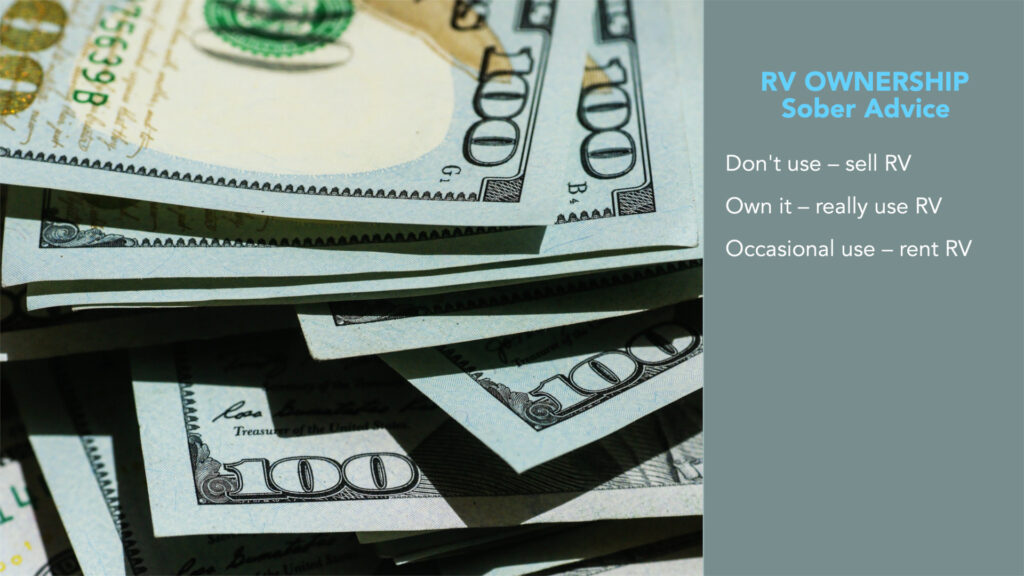
There are other considerations that I did not cover, like accelerated tow vehicle maintenance, the possibility of having to purchase a tow vehicle to enter the lifestyle, food cost differentials vs. hotel stays, and likely the most significant other issue – the go/no go decision.
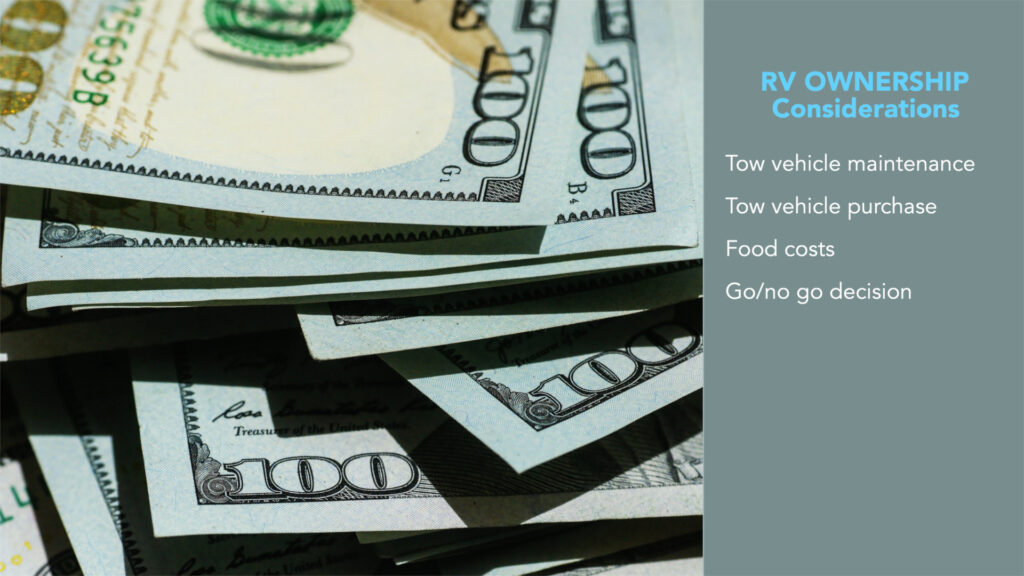
By this, I mean many of us have personal situations where it is either travel by RV or no travel at all. Since RVing provides us with personal accommodations, can better facilitate medical, mobility, and pet issues, and affords better food preparation and recreational opportunities, it isn’t just about the rental costs. We should consider quality of life issues with our limited time remaining, and it is impossible to quantify this factor.
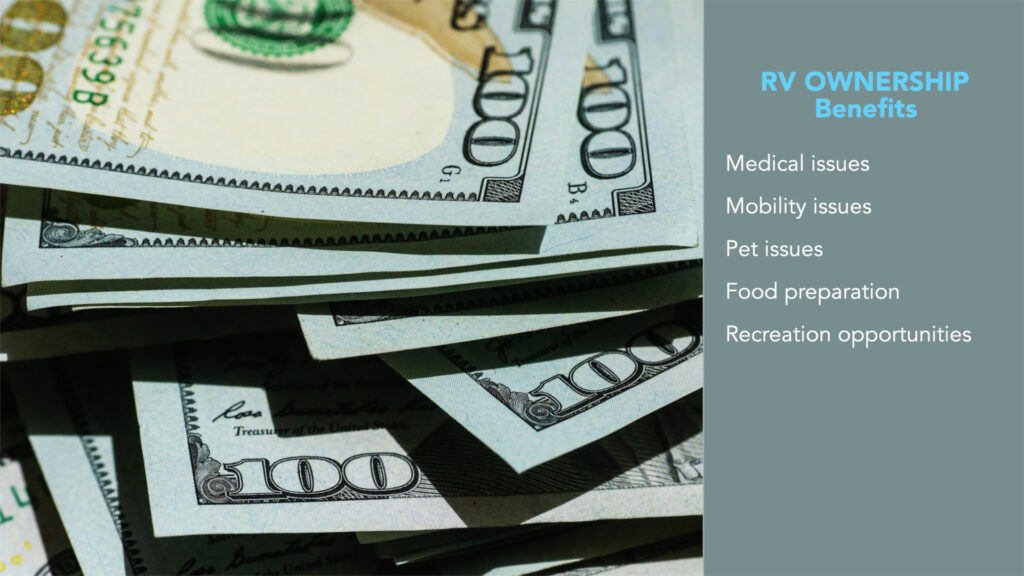
I sincerely hope this has provided an in-depth look at the cost of owning an RV. It was well worth the effort if I have helped you think through what this means or even dissuaded or delayed you from purchasing – you should know and count the cost before plunging in. Moreover, I hope I have motivated current RV owners to act – to use and enjoy what a home away from home on wheels can provide.
That should do it. All the best in your camping adventures!
As always, thanks to our fans who support our efforts by starting their shopping from our Amazon Storefront and their generous financial support by using the THANKS feature located under each YouTube video ($ within the Heart icon). Your support is greatly appreciated!
